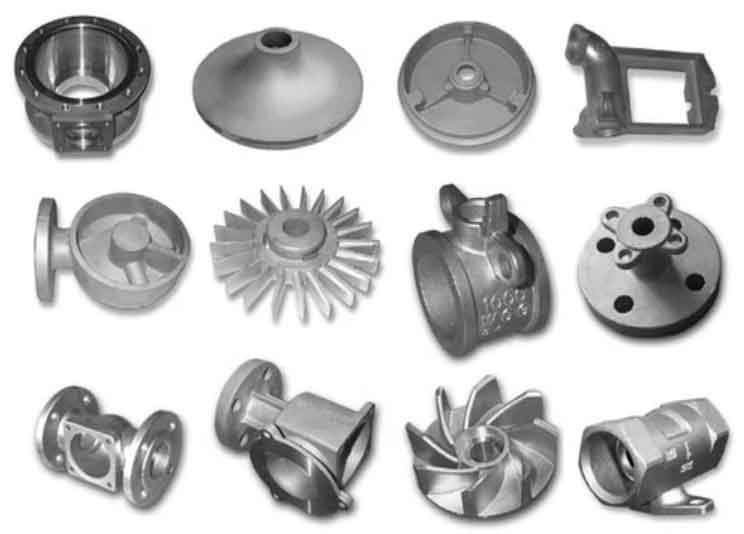
There are several types of casting processes used to produce different types of casting parts. Here is a comprehensive guide to some of the most common casting processes:
- Sand Casting: Sand casting is one of the most widely used casting processes. It involves creating a mold using a mixture of sand and a binder material. The mold is then filled with molten metal, which solidifies and takes the shape of the mold. Sand casting is suitable for producing large and complex parts.
- Investment Casting: Also known as lost-wax casting, investment casting is a precision casting process. It involves creating a wax pattern of the desired part, which is then coated with a ceramic shell. The wax is melted out, leaving behind a cavity that is filled with molten metal. Investment casting is known for its ability to produce parts with excellent surface finish and dimensional accuracy.
- Die Casting: Die casting involves injecting molten metal under high pressure into a steel mold, called a die. The metal solidifies quickly and takes the shape of the mold. Die casting is commonly used for producing high-volume parts with complex geometries, such as those used in automotive and consumer electronics industries.
- Centrifugal Casting: Centrifugal casting involves rotating a mold or die while pouring molten metal into it. The centrifugal force distributes the molten metal evenly, resulting in a denser casting with improved mechanical properties. Centrifugal casting is often used for producing cylindrical-shaped parts, such as pipes and tubes.
- Continuous Casting: Continuous casting is used for producing long and continuous lengths of metal. The process involves pouring molten metal into a water-cooled mold, which solidifies the metal into a continuous solid shape. Continuous casting is commonly used for producing metal bars, rods, and strips.
- Shell Molding: Shell molding is a casting process that uses resin-coated sand to create a mold. The sand mixture is heated to create a hardened shell, which is then filled with molten metal. Shell molding offers good dimensional accuracy and surface finish and is suitable for producing medium to large-sized parts.
- Permanent Mold Casting: Permanent mold casting, also known as gravity die casting, involves pouring molten metal into a reusable metal mold. The mold is designed to allow easy removal of the solidified casting. Permanent mold casting is commonly used for producing parts with good dimensional accuracy and surface finish.
- Ceramic Mold Casting: Ceramic mold casting is a casting process that uses ceramic molds to create intricate parts. The molds are made by shaping ceramic materials and firing them at high temperatures. Ceramic mold casting offers excellent detail reproduction and is commonly used for producing small and complex parts.
These are just a few examples of the various casting processes used to produce different types of casting parts. The selection of the casting process depends on factors such as the complexity of the part, required dimensional accuracy, material properties, production volume, and cost considerations. Each casting process has its own advantages and limitations, and manufacturers choose the most suitable process based on the specific requirements of the part and the desired end result.
